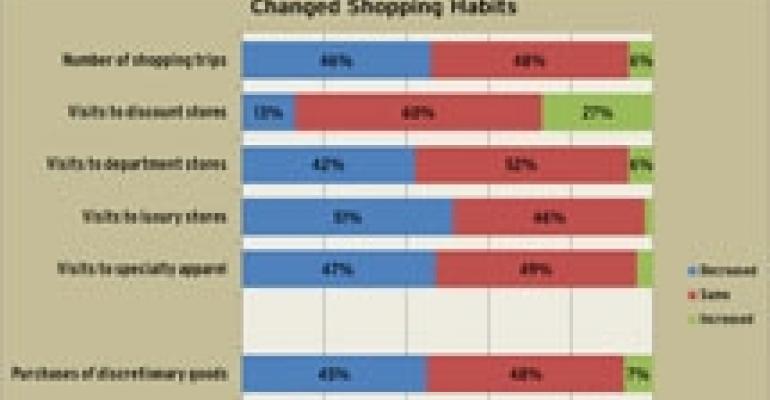A survey of more than 2,500 U.S. and Canadian residents reveals some insights into how consumers have altered their shopping habits as a result of the recession. The study, conducted by ICSC and The Research Shop, found that while consumers have cut back and changed where they are shopping, many are optimistic that the financial situation will improve over the next 12 months and expect to increase their spending as it does.
In all, 42 percent of respondents said that their financial situation would improve a lot or somewhat and another 47 percent expected their situation to stay the same. Only 11 percent thought their situation would get somewhat or a lot worse.

One way that has manifested itself is in how people are shopping. Many shoppers have cut back on the total number of shopping trips they took in the past year with big declines also posted in the number of visits to department stores, luxury stores and specialty apparel stores. Consumers have not cut back as much on trips to discounters, however. The largest cutbacks in spending have come in dining out. Overall, 59 percent of respondents said they are spending less on fine dining, 53 percent cut back on casual dining and 45 percent cut back on fast food dining.
Other areas where consumers have cut back include on movie theaters (53 percent), salons and spas (53 percent) and apparel and accessories (51 percent).

More than 75 percent of shoppers say they have cut back in some way or another in the past year and nearly half have cut back in almost every retail category. Retailers that sell necessities—discounters and grocery stores—have fared the best in the slowdown.
The study provided also some insight as to where consumers are most likely to go shopping. Strip centers are the most popular destination. Consumers, in all, visit strip centers 16.6 times per year. Frequencies for other property types include 10.1 visits for enclosed malls, 5.8 visits for outlet centers, 7.4 visits for outdoor or lifestyle centers and 7.0 visits for downtown areas.

In addition, consumers were asked what kinds of retailers or services they would like to see added to their local malls. The most common request was for discounters (49 percent), with demand present for dining (33 percent) and grocery stores (31 percent) as well. However, about one-fifth of respondents said they are satisfied with the current offerings at their local mall.
When the economy improves, the study found that 19 percent of consumers expect to increase the number of shopping trips they take. Per store category, respondents expect to increase their visits to department stores by 18 percent, to discounters by 16 percent, to apparel retailers by 11 percent and to luxury stores by 9 percent.

